The Anime Guide to Spring 2016
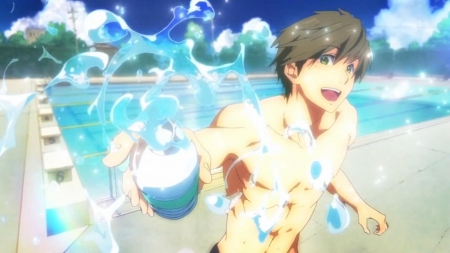 For some, school is out. Congratulations! The deadly heat of the sun is a perfect excuse to sit inside with a tub of ice cream and to binge-watch the previous season of anime. If you have adult responsibilities (i.e. summer break no longer exists for you), then you might have slightly less time to enjoy the home life. Either way, the Seasonal Guide to Anime is back to help you sort through the anime of Spring 2016.
For some, school is out. Congratulations! The deadly heat of the sun is a perfect excuse to sit inside with a tub of ice cream and to binge-watch the previous season of anime. If you have adult responsibilities (i.e. summer break no longer exists for you), then you might have slightly less time to enjoy the home life. Either way, the Seasonal Guide to Anime is back to help you sort through the anime of Spring 2016.
The Anime Guide is a one-stop shop, a partially impartial list of anime that have come out the previous season. I hope to assist anime newcomers in finding their anime “cup of tea,” as opposed to creating yet another “Top X Anime” list. Beneath the General Insights lies the In-depth Discussion for veterans already familiar with the anime scene where I address a variety of topics concerning specific series and anime as a whole.
As with before, I will not cover certain anime because they are insignificant; are for “kids”; have prequels that I have not watched and, thus, cannot pass fair judgment on; have previous incarnations in different media that I have followed; are unfinished and have unaired episodes that I feel might influence the final verdict; or are some combination of the five:
12-sai.: Chiccha na Mune no Tokimeki, Aikatsu Stars!, Anne Happy, Battle Spirits: Double Drive, Beyblade Burst, Big Order, Bishoujo Senshi Sailor Moon: Crystal – Death Busters-hen, Boku no Hero Academia, Cardfight!! Vanguard G: Stride Gate-hen, Duel Masters VSRF, Future Card Buddyfight DDD, Kaitou Joker 3, Kamiwaza Wanda, Kuromukuro, Kidou Senshi Gundam RE: 0096, Kyoukai no Rinne 2, Macross Δ, PriPara 3rd Season, Sansha Sanyou (Three Leaves, Three Colors), Seisen Cerberus: Ryuukoku no Fatalité (Cerberus), Shounen Maid (Shonen Maid), Sousei no Onmyouji (Twin Star Exorcists), SUPER LOVERS, TERRA-FORMARS REVENGE, Ushio to Tora 2.
Spring 2016
Table of Contents
- General Insights
1.1 Bakuon!!
1.2 Bungou Stray Dogs
1.3 ENDRIDE
1.4 Flying Witch*
1.5 Gakusen Toshi Asterisk 2 (The Asterisk War 2)*
1.6 Gyakuten Saiban: Sono “Shinjitsu”, Igi Ari! (Ace Attourney)
1.7 High School Fleet
1.8 Hundred
1.9 Joker Game
1.10 Kiznaiver
1.11 Koutetsujou no Kabaneri (Kabaneri of the Iron Fortress)
1.12 Kuma Miko (Kumamiko -Girl Meets Bear)
1.13 Mayoiga (The Lost Village)*
1.14 Netoge no Yome wa Onnanoko ja Nai to Omotta (And you thought there is never a girl online?)
1.15 Re: Zero Kara Hajimeru Isekai Seikatsu (Re: Life in a different world from zero)
1.16 Sakamoto desu ga? (Haven’t You Heard? I’m Sakamoto)*
1.17 Tanaka-kun wa Itsumo Kedaruge (Tanaka-kun is Always Listless)
- General Insights
The Guide
1.1 Bakuon!!
Synopsis: Sakura Hane is your average ditzy high school freshmen, not particularly special in any way. On her first day of school, Sakura gets tired going up a hill on her bike when she sees a fellow student zoom past on a motorcycle. Instantly intrigued by the ease and comfort that a motorcycle could offer her, Sakura aims to get her license and enjoy the life of a motorcyclist with the help of her friends at the motorcycle club.
Bakuon is another “cute girls doing cute things” anime. Nothing really meaningful goes on, but that doesn’t necessarily mean it’s a bad anime or unamusing. Though there is some lost potential and room for improvement, those looking for a laid-back way to kill some time and learn an odd fact about motorcycles here and there will find Bakuon to be a pleasure.
Yes, you should watch: The art is a little plain and stereotypical, but it does it’s job. As a “cute” anime, Bakuon values nothing more than cute art, and the series provides this in spades. In addition, those familiar with other cute anime will inevitably anticipate the drag that results from the slow-paced nature of the genre, but no such drag exists in Bakuon. The general pacing of the series is a bit faster than similar series, so that particular issue is a less relevant.
No, you shouldn’t watch: If you’re looking for a moving, intricate plot or deep characters with complex struggles, you’ll have to look elsewhere. Cute girls have no time for such things. On a serious note, Bakuon has no substantial content. The most disappointing side to this drawback is the fact that despite the series being entirely about motorcycles, the automobiles take a back seat to the girls and little information is given about this awesome and cool form of transportation.
Similar series: K-On, Shirobako, HanaYamata,
1.2 Bungou Stray Dogs
Synopsis: Atsushi Nakajima was kicked out of his orphanage, and with nowhere else to go, he roams the countryside hungry. On the brink of death, Atsushi decides he’ll mug the next person he sees when he meets a strange man trying to drown himself. This eccentric individual happens to be Osamu Dazai, a member of the Armed Detective Agency. Taking on cases too dangerous or difficult for the police, the Armed Detective Agency employs people with supernatural powers to tackle the city’s problems. After feeding Atsushi, Dazai coercively employs his help in their most recent case. Surrounded by unnaturally strong people chasing after equally powerful foes, how will Atushi fare during his stay with the Armed Detective Agency?
Bungou Stray Dogs has many split on how the series actually performs. On the surface, it seems character-heavy with little excitement in the plot department. Others will argue that the narrative is fine in part because of the characters. I myself was in the latter camp.. until I found out that a second season was slated for the fall season. Things made sense. Bungou Stray Dogs is indeed character-heavy and the events that occur in the anime seem arbitrary at times; however, this is most likely due to that fact that there has been a second season planned and the first was utilized mostly to set the foundation for what should be an entertaining series.
Yes: The visuals in Bungou Stray Dogs are endearing and inspiring. There is no staticky animation or awkward moments of lesser quality that stick out, which is always nice to see. Coupled with a good amount of action, viewers are in for a feast for the eyes. All the characters look great, and most of the important ones are also deeply and gracefully presented as full characters, with only a few seeming haphazard and rushed. The premise of the series and the main plotline might be the major drawing points initially, but the characters will be what hold your interest.
Maybe: There aren’t any glaring errors that would dissuade viewers from watching Bungou Stray Dogs. The biggest drawback is the plot, which starts off fairly slowly for the first two or three episodes before picking up. In addition, some parts seem to be filler, arbitrarily included and insignificant to the main plot. While these are both valid downsides, the fact that a second season is slated for broadcast later somewhat mitigates these points as, hopefully, the narrative meat of the show will take place in the latter half.
Similar Series: Kekkai Sensen, Hamatora The Animation, D. Grey-Man
1.3 Endride
Synopsis: Asanaga Shun is a carefree 15-year old with an obsession with crystals. He lives a normal life, albeit with a father far too focused on his research to come home. On his father’s birthday, Shun declares that this is the last time his family will celebrate without the man himself and marches into his father’s office, where he spots an unusual crystal. Wanting to hold it himself, Shun removes the security and touches the crystal, instantly vanishing.
Emilio is the crown prince of the world of Endra. The reigning king usurped the throne when Emilio was younger, sparing the young boy and raising him. Having held in his comtempt for the current king, Emilio waited until the day he could legally rule the kingdom himself: today. He attempts to assassinate the king and flees for his life, only to be captured and put in prison. Emilio has little time to escape, but the situation appears hopeless.when a strange portal distorts the bars of the cell and Shun appears. Endride chronicles the journey of two boys joined by a supernatural coincidence in a hostile land. Using the strange powers available to them, Shun and Emilio must band together to fulfill Emilio’s plans and get Shun back to where he belongs.
Endride, like many other anime based on video games, will likely appeal to a small core audience who find themselves drawn to the world of Endra. To anyone outside that audience, Endride is confusing and lacking in quality substance. There is a second cour incoming this coming season, so whether or not the flaws of Endride get fixed remains to be seen. However, considering the path the series is on now, it’s likely that those who already find the series enjoyable will keep watching and those who already jumped ship won’t be coming back on.
Yes: Endride is a fantasy style anime that likes to take itself seriously. The world of Endra is visually interesting with a distinct expository background, making it unique from the many other fantasy adventure series out there. The characters start off a bit stale, but as the story progresses, their initial flaws are bearable. If you’re one to get immersed in the world of a video game or a movie, Endride is one to give a try, albeit with a grain of salt.
No: While the ideas behind Endride are pretty neat, the execution is subpar at best. While the art for the world of Endra isn’t too bad, the characters and any moving objects aren’t drawn or animated to the same standards. The character design is some of the most unfitting of the season: it’s as though the designers didn’t know how to draw 15-year old teenagers or moderate facial emotions. The writing isn’t all that great either with more than a few cringe-inducing moments in the script that’s made even worse at times by poor performances by certain voice actors.
Similar Series: Fullmetal Alchemist, Fate/stay night, God Eater, Arslan Senki, Rokka no Yuusha (Rokka: Braves of the Six Flowers)
1.4 Flying Witch*
Synopsis: The Aomori prefecture in Japan is known for its serene and picturesque natural beauty. From lush forests to scenic waterfalls, the abundance of nature is perfect for sightseeing, tourism, and magic. After becoming a fully-fledged witch at the age of 15, Kowata Makoto moves to her relative’s place in Aomori to finish high school whilst being surrounded by the perfect environment to continue her magical training.
Flying Witch is a hardcore slice-of-life series, as contradictory as that sounds. Viewers follow the everyday life of Makoto as she goes about attending her duties as a high school student and meeting people from both the magical and ordinary worlds. While magic heavily influences the direction of the series, don’t expect epic magical battles and intense supernatural happenings. Flying Witch is hardcore slice-of-life precisely because most of the events in the series are calm and relaxing, and for viewers who enjoy slice-of-life already, the series is bound to be a treat.
Yes: If it weren’t already clear, Flying Witch is one of the calmest, most serene anime out there. It’s a concentrated dose of the essence of slice-of-life with little conflict, drama, or comedy to get in the way. The art style heavily augments the halcyon atmosphere with beautiful backgrounds and characters that are still distinctly anime but take away the bells and whistles that other genres embrace — simple and to the point, just like the series itself.
No: High-octane action, grand adventures, and tense moments of conflict are not to be found here. As with other series that immerse themselves and excel in a single genre, the cons are more about what the anime doesn’t provide.
Similar Series: Joukamahi no Dandelion (Castle Town Dandelion), Non Non Biyori, Tamayura: Hitose
1.5 Gakusen Toshi Asterisk 2 (The Asterisk War 2)*
Synopsis: (Season 1) Amagiri Ayato is a new transfer student at Seidoukan Academy, one of the six prestigious centers that focus on the development of students with superhuman abilities — Genestellas. Genestellas come to compete at events known as festas, tournaments that face students against each other. Ayato isn’t interested in these festas, instead having joined the school for reasons linked to his past. However, things change when he discovers that there is more concerning Seidoukan Academy and the festas as a whole than appears on the surface.
The Asterisk War 2 is a continuation of the first season, and, for better or worse, inherits most of the pros and cons of its predecessor. For those looking for a more in-depth anime, whether that depth is in the plot, the characters, or even the action, treasures lie elsewhere. However, those looking for a high school science fantasy setting with some fighting and some girls, The Asterisk War was made for you. Generic though it may be, the series is nonetheless as enjoyable as most other anime with a similar setting.
Yes: The appeal of The Asterisk War lies in the tried and (debatably) true method of success of delivering a fantasy setting centered around an academy for supernatural powers. In the second season, there’s relatively more fighting and action, which is nice to see in a genre that is full of potential for amazing fight scenes but often fails to capitalize on their blessings. Much like the other magical high school anime on this list, The Asterisk War is a relatively safe place to start watching anime if you’re new to the medium. It doesn’t require too much attention to fully enjoy, and it incorporates different basic elements of popular themes and patterns present in anime.
No: I mentioned above that The Asterisk War doesn’t take too much attention to enjoy, and part of that might stem from the fact that paying too much attention might ruin the series. For the more detail-oriented folks or the ones experienced in other media such as film or literature, The Asterisk War might be a little shallow in terms of its characterization, plot development, and other aspects that form the basis of good fiction.
Similar Series: Mahouka Koukou no Rettousei (The Irregular at Magic High School), Rakudai Kishi no Cavalry (The Chivalry of a Failed Knight)
1.6 Gyakuten Saiban: Sono “Shinjitsu”, Igi Ari! (Ace Attorney)
Synopsis: Naruhodo Ryuichi (a.k.a. Phoenix Wright) has just started working in the court as a defense attorney, and his career starts off rather suddenly: his friend has been framed for the murder of a woman. Using nothing but pre-gathered evidence, the testimonies, and his intuition and logic, Phoenix Wright sets out to save the innocent and find the truth behind the various cases that come to court.
The name Phoenix Wright might sound familiar to some; it is, after all, the name of the protagonist of the video game series Ace Attorney. The anime adaptation does a rather nice job at covering most the main points of appeal of the games, and it was amusing to see how the directors ended translating those aspects onto the screen. However, aside from the game-genic appeal, Ace Attorney has little else going for it.
Yes: Fans of the games might well enjoy the anime as well. From the layout and visual details of the courtroom to the renown battlecry “Objection!”, Ace Attorney ensures that most of the best elements of the games were faithfully kept intact.
No: Unfortunately, even those who are long-time fans might see themselves losing interest. The transfer from game to anime means a quintessential aspect of the games is absent: agency in figuring out the mystery yourself. The excitement and tension of solving the cases disappears in a non-interactive medium, and most the cases are fairly boring. In addition, the repetitious nature of the show results in the later episodes becoming predictable. Couple those problems with a script aimed towards a younger audience and shoddy animation quality, and most older viewers might find themselves dropping the show after a few episodes.
Similar Series: None
1.7 High School Fleet
Synopsis: After a catastrophic war that eroded away the nation’s landmass, Japan turned to boats to support its population. With increasingly closer ties to maritime infrastructure, Japan grew to be a country with an extreme emphasis on naval education. Misaki Akeno had just been accepted to a high school naval academy with hopes of joining the all-female vigilante group, the Blue Mermaids. Along with the classmates and crew of her ship, the Harekaze, Misaki is excited to start her first real experience at sea. However, things go awry from day one when a training instructor fires at the Harukaze for unknown reasons. Though the crew manages to retaliate and escape with their lives, their actions are deemed mutinous and they face the consequences.
High School Fleet (or Haifuri as it’s affectionately referred to) seems to be another show of cute girls doing cute things, this time on a boat. Viewers will be pleasantly surprised when the first episode reveals a dark twist followed by episodes of tense conflict animated with great CGI. Haifuri has a lot of good things going for it, and while flaws do exist within individual episodes, the overarching premise and execution of the series is kept simple and enjoyable.
Yes: One of the prime reasons to watch Haifuri is for the action. There’s no skimping on any moments of intense ship versus ship conflict, and up to a third of every episode was dedicated to fighting. The amount of action is augmented by excellent use of CGI, creating realistic and fiery battles in every episode. Speaking of the CGI, the visuals in general are at a decent level all around. Though there were definitely a few moments where traditional animation quality fell, these are few enough that they don’t appear for episodes at a time. And if you like watching cute anime girls doing anything, the all-girl cast combined with overall cute and varied character designs should catch your attention as well.
No: There is one drop in tension in the first-half of Haifuri. While the suspense does pick up again, it never reaches quite the same level as it did before the drop. If you are looking for an intense thriller anime, dramatic from start to finish, and absolutely nothing else about the series appeals to you, Haifuri is one to pass. On the other side of the tension spectrum, those looking for a calm days at sea surrounded by anime girls doing anime girl things should also look abroad.
Maybe: One potential flaw of the series is the fact that it utilizes character tropes to formulate its characters. With an exceptionally large cast and only 12 episodes, it’s somewhat expected that Haifuri relies on pre-existing archetypes to give the crew of the Harukaze some personality. However, all characters are given the right amount of screen time to where their nature as copy-paste characters is irrelevant, and the main characters are interesting enough that even the little existing character development can get you invested. If tropes are an absolute pet peeve, then Haifuri may warrant a pass, but to nearly everyone else, this shouldn’t be an issue.
Similar Series: Girls und Panzer, Kantai Collection, Gakkou Gurashi (School Live)
1.8 Hundred
Synopsis: The Earth is constantly being invaded by showers of extraterrestrial monsters known as Savages. Immune to conventional warfare, a new weapon known as ‘Hundred’ was developed to counter the alien threat, and only a select few called the Slayers can wield these powerful tools. Little Garden is a town on a ship that dedicates its resources to train new Slayers of all ages to combat the ever-growing threat of the Savages. High school student Hayato Kirishima one of these new recruits, albeit with a record-breaking level of compatibility with Hundred. With equally powerful allies, Hayato and his classmates fight on the battlefield to protect Little Garden and the world from Savage attacks.
Hundred is the latest iteration of a commercially successful formula. The sci-fi magical high school setting is not uncommon, and Hundred follows its predecessors’ footsteps to the tee. As a result, the series inherits many of the faults and strengths of the genre. There will be distinctive sides to this anime simply because it’s so similar in structure to its predecessors. If you enjoy the setting of a specialized sci-fi/magic-focused high school that’s involved in saving the world or something similar, Hundred is right up your alley. To those who’ve long given up on the genre, you can boycott Hundred, as nothing has significantly changed. If you’re completely new to anime, it’s not a bad place to start out and see what the genre is like.
Yes: There is a good amount of action in the series relative to some of its cousins, which is a pleasant surprise. While previous anime looked as though action would be abundant, they usually lacked high-intensity scenes,. Even better is the fact that Hundred likes to highlight its fights with decent camerawork and fluid animation. While it won’t win any awards, the visual aspect of Hundred is praiseworthy, especially considering the quality shown by its recent predecessors.
No: “Magical high school” anime has earned a less than stellar reputation, and Hundred shows nothing new. The characters are static with a few exceptions, especially the protagonist who has the personality profile of plain tofu (that is, tasteless and boring). The plot is strange and has an arbitrary resolution with a strange narrative twist in the middle of the series. Character relationships aren’t very interesting and take random turns. None of these are new issues that plague popular series from similar origins.
Maybe: There is some fanservice in Hundred. A small amount compared to some other series for sure, but fanservice nonetheless. If you’re looking for something that’ll satisfy your anime boob quota, look elsewhere. To others that want to enjoy the action without the copious amounts of 2-D breasts, this will be a nice positive point. Again, that’s not to say there’s no fanservice, just a lesser amount.
Similar series: Infinite Stratos, Date-A-Live, Mahou Koukou no Rettousei (Irregular in Magic High School), Gakusen Toshi Asterisk (The Asterisk War), Rakudai Kishi no Cavalry (The Chivalry of a Failed Knight)
1.11 Joker Game
1.9 Joker Game
Synopsis: It’s World War II, and Japan is behind in the information race. To counter their lack of intelligence, the Japanese government creates the D Agency. With Lieutenant Colonel Yuuki at the helm, the agency trains spies to infiltrate other countries and give Japan the intelligence it needs to survive the war games.
Structured as individual anecdotes, Joker Game focuses on the stories of different spies as they undertake their missions. While most spy movies would have you believe that the life of the spy is action-packed, luxurious, and independent, Joker Game attempts to undermine that image with a slightly more realistic one that focuses on the gathering of intelligence. With good tension in each individual episode, Joker Game is a fine example of short story narration with a premise nobody knew they wanted. On the other hand, those looking for a series with a comprehensive overarching narrative would be wise to look elsewhere.
Yes: For fans of the short-story medium, Joker Game is worth considering a watch. Each episode is a short story told with varying details held together by the common thread of more realistic spying. The thrills in each episode are distinct, meaning that what held you captive in one episode is replaced with an equally compelling but different form of engagement in another. The artistic style is heavily influenced by media depiction of the fashion and architecture at the time, giving that old-timey 40’s feel, a style not heavily explored by anime. For those looking for an alternative take on the medium of anime, Joker Game should be intriguing at the least.
No: An epic spy adventure is not what Joker Game is about. Anyone with the Hollywood dream of the spy life will be displeased, as there’s little direct conflict, high-tech gadgetry, and opulent information gathering tactics here. In addition, each of the short stories have no common elements save for the lone figure of the Lieutenant Colonel, who rarely has a direct impact on the stories themselves. And due to the nature of the short story, each episode will have independent levels of engagement. Some accurately reflect the slow and grueling work of a spy with equally slow and uninteresting stories, while others are furiously engaging and over all too quickly. In addition, though the initial episodes and perhaps the genre tags suggest that the show is a psychological thriller, some episodes prove otherwise. At least in the most stereotypical and prominent sense, Joker Game is not always a psychological thriller.
Similar Series: Baccano!, Durarara!!, Mushishi (short story)
1.10 Kiznaiver
Synopsis: Katsuhira Agata has never remembered feeling pain. He has never felt the sharp sting of a prick or the dull ache of a punch, the consuming burn of anger or the hopeless despair of heartbreak. Eventually, he loses all interest in everyone and everything. Life becomes colorless and monotone — that is, until Katsuhira joins the Kiznaiver project, a secret government operation that aims to create stronger bonds between people by forcing them to share pain. Paired with five of his classmates, can the boy who never hurt or cared finally open his heart?
From the staff that brought series such as Kill la Kill and Tengen Toppan Gurren Lagann comes something markedly different from the aforementioned series. While studio Trigger keep their colorful and lively animation style, they aim to tug at the heartstrings rather than engage in zany combat in their latest production. Unfortunately, their departure from familiar grounds was accompanied by a drop in quality. Kiznaiver is objectively mediocre or slightly good at best, but it shows that an anime doesn’t have to be great to be enjoyable as well.
Yes: Character chemistry is an integral part of Kiznaiver. Considering that the entire series is based around the development of interpersonal relationships, Trigger had to get this right as a bare minimum, and they do it with the finesse expected of the esteemed studio. While the characters themselves aren’t the most interesting people, the way each individual interacts with the others in the group creates a lively and entertaining dynamic that keeps you coming back for more. The visual aesthetic helps this in no small part. The exaggerated, cartoonish animation style helps in the creation of distinct personas for each character, grounded by an art style that doesn’t disappoint. Trigger proves that despite a long break, they’ve still got their magic touch when it comes to animating.
No: Kiznaiver is one of the unlucky series that, if given another 12 episodes, could have been amazing. Nothing in Kiznaiver feels too rushed or forced, but there are some things that could have used a few more episodes to get just right. As a result, some of parts of the resolution feels half-baked or glossed over. One ramification of the brevity of Kiznaiver is that a lot of the tension in the series comes off as melodramatic, which might appeal to a younger audience or those with a youthful soul but not to others looking for a deeper look at the human condition.
Maybe: Though I mentioned before that the characters in the series aren’t very good, it’s very much so on a personal basis. It’s true that some of the characters are paper cutouts with the depth of cardboard, but others are genuinely interesting and will grab your attention. Which characters these are vary from person to person, but there seems to be one or two that people gravitate too. And while some might argue that the stereotypical, trope-reliant characters are nothing significant, others say that those “tropes” exist in Kiznaiver because it’s how real people would act. Again, the length of the series prevents us from really digging deep into the characters, but that doesn’t mean they’re all bad.
Similar series: Kokoro Connect, Anohana, Glasslip, The Pet Girl of Sakurasou
1.11 Koutetsujou no Kabaneri (Kabaneri of the Iron Fortress)
Summary and Synopsis: Zombie-like creatures known as Kabane have taken over the land of Hinomoto, and its people have taken shelter in massive cities built in train stations. Infectious bites and near invulnerability to conventional weaponry ensure that once the Kabane infiltrate a station, no survivors remain. Ikoma works as a steam engineer in the city of Aragane, disgusted not only by the cowardice of the human race, but also of the abusive treatment of commoners by the samurai who “protect” the city. He has been developing a weapon that can pierce the impenetrable heart of the Kabane in the hopes that it will bring hope, courage, and power to the people. One day as the Kabane manage to breach the walls of Aragane, Ikoma gets his chance. He and a hodgepodge group of survivors board a locomotive named the Koutetsujou (the Iron Fortress), beginning their fight against the Kabane as they ride the tracks.
Edo-era shogunate steampunk samurais in a zombie apocalypse. That label alone attracted people to this anime, and the show isn’t too flimsy in playing up its biggest selling point. Unfortunately, there’s a lot to turn away potential viewers as well. Although Kabaneri has an interesting premise, good art, and amazing music, to say that the writing and narrative need improvement is an understatement.
Yes: The one aspect of Kabaneri that is undoubtedly good is the music. Most visual media come with decent soundtracks, as music largely flies under the radar. But Kabaneri’s soundtrack is gorgeous, bringing color into a drab world filled with zombies. Not everyone notices the musical accompaniment to visual media, but for those who do, Kabaneri is definitely one to check out. The art is also pleasantly drawn. Although it’s simply a more detail variant of standard anime art, it provides an extra texture that matches the tone of the anime well.
And there are samurais who live in a world overrun by a zombie apocalypse where everything is made of metal and powered by steam.
No: There are more than a few cringe-inducing lines in Kabaneri. The script is awkward and cheesy at times, arbitrary at others. The most severe ramifications of bad writing manifest in the characters, turning potentially interesting ones into irrational, stubborn caricatures.
Similar Series: Shingeki no Kyojin (Attack on Titan), God Eater
1.12 Kuma Miko (Kumamiko -Girl Meets Bear-)
Synopsis: Ayamidori Machi desperately wants to leave her rural village to live in the big city. Unfortunately, her duties as the local shrine priestess puts her in daily contact with a talking bear who insists that the city life doesn’t suit her. Kumai Natsu doesn’t want his human friend to leave him, but Machi’s stubborn attitude forces him to acknowledge her wish. Natsu agrees to allow Machi to leave only if she can prove to him that she is indeed capable of living in the city. Follow the duo as the bear prepares wacky tasks for Machi to complete to prove that urban living is her calling.
Kuma Miko to most will seem like a typical slice-of-life series, and for the most part, it is. However, those looking for that classic slice-of-life experience would be better off looking at the other entries in this list; the actual slice-of-life portion of this series is rather underwhelming in comparison to the others this season. In addition, newcomers to anime or the genre might find the series slow, uninteresting, and pointless. I feel the biggest appeal for Kuma Miko comes from the roundabout educational value that the series has concerning the differences between typical urban and rural styles of life present in Japan.
Yes: Despite what I said before, Kuma Miko is still indisputably a slice-of-life series. Those with an unconditional love for the genre will still enjoy this anime. The hook for outsiders will be the contrasts between the two aforementioned modes of life, which is present in anime but hardly the focus like it is in Kuma Miko. While the series usually pokes fun at Machi’s lack of knowledge about city life, the secondary consequence for doing so ends up being a few interesting tidbits gained about specific generalizations about Japanese cities.
No: Kuma Miko offers nothing new, and while this ipso facto isn’t a problem, Kuma Miko isn’t always enjoyable in the limits of what it utilizes.
1.13 Mayoiga (The Lost Village)*
Synopsis: Rumor has it that those who visit Nanaki Village are given new lives, free of the constraints of modern society. Hidden deep in the mountains, no one had ever managed to pinpoint the location of this enigmatic village. One day, a certain individual claims to have found the village and invites others to join him in escaping from society. However, upon arrival, they find the village abandoned as though the previous inhabitants had been spirited away. While the village functions as shelter just fine, unnerving events happen one after another. Missing people. Strange noises from the forest. The village is hiding a frightening secret, but can the group abate the fear and mistrust long enough to figure it out?
The Lost Village appears to be a supernatural horror mystery. While that label isn’t completely wrong, the series loses its direction mid-season, leaving us viewers with an amalgamation of elements from each of the aforementioned genres, none of which are fully developed. A massive cast means that the characters are as shallow as the show itself. You’ll find that much like the trip to the lost village itself, the destination isn’t quite what it’s made out to be.
Yes: The mystery and suspense of the early points definitely shine. Even if those aspects of the series don’t necessarily maintain that level of quality all the way to the end, the initial intrigue might be enough for some to stick with Mayoiga. The first few episodes were so interesting to me that despite the obvious deterioration throughout the series, I stuck with it.
No: If the premise of the series doesn’t engage you, it’s probably best to drop the show. A strange, unfulfilling ending with plenty of hiccups along the way are just two symptoms of Mayoiga‘s general lack of polish in the writing. With a half-baked cast, overly convenient plot devices, and overall frustrating development, Mayoiga leaves a lot to be desired.
Similar Series: Rokka no Yuusha (Rokka: Braves of the Six Flowers), Another
1.14 Netoge no Yome wa Onnanoko ja Nai to Omotta (And you thought there is never a girl online?)
Synopsis: Nishimura “Rusian” Hideki once felt love. After professing his feelings for a girl in an online game, Rusian was promptly rejected, only to find out that his crush was actually a man in real life. With his heart broken, he vowed never to trust an online female character again. Some time later, Rusian finds himself in a guild with a girl deeply in love with him. After deciding to meet with his guild offline, Rusian finds out that not only is his online sweetheart an actual girl and a classmate, the rest of his guildmates are as well.
Netoge is yet another title that revolves around an MMORPG setting, albeit this time with a focus on the everyday lives of the players. If the premise of high schoolers dealing with the issue of how to have a happy balance of a normal social life and video games sounds interesting, Netoge is just the right pick. Otherwise, your time is better spent on other things.
Yes: The premise of the series is the primary and sole point of appeal of the series. It’s easy to relate to the idea, particularly for those who have faced a similar dilemma.
No: Unfortunately, Netoge doesn’t have much else running for it in the appeals department. The slice-of-life emphasis means there aren’t any other engaging aspects to the anime other than the aforementioned interesting premise. Of more worthy concern is the lack of good visuals. It’s rare for an anime to have both unsightly art and subpar animation, and the fact that Netoge has both makes it painful to watch.
Maybe: There’s a certain charm to the copy-paste character types that will resonate to those who already enjoy the series. At the same time, copy-paste characters are exactly that: characters with personalities and traits that have been ripped off of others. Neither are they developed meaningfully, so as far as characters go, you’ll either love them or hate them. Nearly everything else about Netoge is decidedly average.
Similar Series: Chuunibyo demo Koi da Shitai (Love, Chunibyo, and Other Delusions), Sword Art Online, Kono Subarashii Sekai ni Shukufuku wo! (KonoSuba: God’s Blessing on This Wonderful World!)
1.15 Re: Zero Kara Hajimeru Isekai Seikatsu (Re: Life in a different world from zero)
Synopsis: “When Subaru Natsuki leaves the convenience store, the last thing he expects is to be wrenched from his everyday life and dropped into a fantasy world. Things aren’t looking good for the bewildered teenager, however: not long after his arrival, he is attacked by some thugs; armed with only a bag of groceries and a now useless cell phone, he is quickly beaten to a pulp. Fortunately, a mysterious beauty named Satella, in hot pursuit after the one who stole her insignia, happens upon Subaru and saves him. In order to thank the honest and kindhearted girl, Subaru offers to help in her search, and later that night, he even finds the whereabouts of that which she seeks. But unbeknownst to them, a much darker force stalks the pair from the shadows, and just minutes after locating the insignia, Subaru and Satella are brutally murdered.
However, Subaru immediately reawakens to a familiar scene — confronted by the same group of thugs, meeting Satella all over again—the enigma deepens as history inexplicably repeats itself. 1 ”
Re: Zero is one of the season’s most popular anime — and for good reason. There is no reason not to watch the series unless you exclusively watch slice-of-life anime. From the story to the presentation, Re: Zero is a pleasure to watch. And with more episodes to come, I expect the Re: Zero train to chug along just as smoothly into the next season. Whether you’re new to anime or have been watching since the days of Astro Boy, Re: Zero should be one to look out for.
Yes: One of the more obvious appeals of Re: Zero is the fact that it has a bit of everything and does them well. Romance, action, adventure, and fantasy are but a few of the genres tagged by the series. Every element is enhanced by the others, creating an immersive atmosphere unrestricted by traditional bounds of genre. The narrative as well is engaging and well-paced. With 25 episodes planned, Re: Zero takes its time and ensures that each subplot is as detailed as necessary while also keeping the overarching plot relevant. A diverse and (mostly) likable cast and a simple yet appealing art style augment an already good series to create an overall enjoyable experience.
No: Despite all my praise for the series, I can also see why some people may choose to put the series down. The main protagonist can be annoyingly dense at times, almost reaching into the territory of hatred-worthy. If that kind of thing is a make-or-break deal to you, you might consider putting Re: Zero aside, though I personally hated Subaru from the first episode and managed to enjoy the series regardless. Time travel and time loops are also core elements of the series, so people averse to anything related to time travelling and the repetition of events would be wise to steer clear.
Similar Series: Steins; Gate, Boku dake ga Inai Machi (Erased), Hai to Gensou no Grimgar
1.16 Sakamoto desu ga! (Haven’t You Heard? I’m Sakamoto)
Synopsis: Everyone has a social image. Some are nerdy, others are popular, and still others give off that bad boy vibe. Many work hard to perfect their image that they want to show others, but Sakamoto is different. From first glance, Sakamoto is undoubtedly cool. With his enigmatic charm, he captivates the hearts of everyone he meets, boys and girls alike. Whether he’s helping out his classmates or just wandering around the neighborhood, there’s bound to be some strange events wherever Sakamoto is.
It’s a little difficult to give a synopsis for this series in part because it’s a comedy, and in equal part because it’s a comedy reminiscent of other bizarre comedies. Sakamoto isn’t funny in a straightforward “haha” way. Instead, the humor comes from the sheer idiocy and the unique form of awkward Japanese humor.
Yes: While perception of the humor can vary from person to person, one thing that remains objectively good is the balance between the funny and serious moments. While Sakamoto desu ga? is primarily a comedy, the writers and directors have somehow found a way to work in serious moments that blend in smoothly rather than completely clash with the humor. At the same time, the level of solemnity works because it’s a product of the humor, not apart from it. It’s difficult to articulate, but the clip above demonstrates a bit of what I mean.
No: One negative point about the series is that it does take a little time for the laughs to settle in. Sakamoto at first is just strange, and it could take some time to get used to its brand of humor. I hesitate to call this something bad because it’s not a continuous issue, but if you’re looking for a series that will get you laughing from scene one, then Sakamoto will not fulfill that need for you.
Maybe: The enjoyability of the humor will vary from person to person. People familiar with similar series will agree that Sakamoto has done a decent job at setting up its own brand of humor. Those new to the experience might find the series awkward to watch.
Who should watch: If you have a little time and enjoy laughing at the strange things, Sakamoto desu ga? is a series you might enjoy. If you feel unsure about it, definitely try the first two episodes to get the feel of the series.
Similar Series: Gintama, Sket Dance, Nichijou, Lucky Star
1.17 Tanaka-kun wa Itsumo Kedaruge (Tanaka-kun is Always Listless)
Synopsis: As the title might suggest, Tanaka is a high school student that’s always listless. He’s able to sleep in any location through any situation, despite the antics of his various classmates in their attempts to wake him from his slumber. Even in his minutes awake, Tanaka is devoid of energy. Yet, despite his lack of enthusiasm, excitement always seems to follow him.
Tanaka-kun is Always Listless is yet another slice-of-life series in the lineup for the season, one that faithfully follows the tried and true formula in the anime industry. Relaxation and calm days interrupted by inane comedy are the focus here. Anyone who is already a slice-of-life fan won’t see anything new, so the series might be worth a pass if you’re really narrowing down on the best of the season. Still, Tanaka-kun is an enjoyable way to pass the time if you’re just looking for a lazy way to pass the afternoon.
Yes: The appeal here is the same as all the other slice-of-life series previously mentioned, though Tanaka-kun doesn’t have any special features that make it stand out from some of the others on the list. The anime adheres to traditional sources of tension, comedy, and ennui, allowing viewers to feel comfortable with the atmosphere, characters, and plot. While that might seem boring, it seems there are many who would insist otherwise given the series’ overall popularity. Tanaka-kun is Always Listless shows that just because a show feels familiar doesn’t mean it isn’t entertaining.
No: As with other similar entries on this list, don’t be expecting any action or high-tension drama from Tanaka-kun. However, unlike the others, Tanaka-kun‘s adherence to industry standards means that it brings nothing unusual to the table. If you’re pressed on time or are new to the genre or to anime in general, it might be wise to temporarily dismiss Tanaka-kun from your watchlist because despite it’s overall ability to engage the audience, there’s nothing interesting or strange enough to warrant watch label.
Similar Series: Himouto! Umaru-chan, Gekkan Shoujo Nozaki-kun, Sakamoto desu ga?
The End of the Guide
Congratulations, you’ve made it to the end of the guide section! Hopefully, you feel slightly more educated about the general feeling of the season and left with a few anime that interest you. The format and perspective of the guide has changed since the last iteration, so let me know how you feel about the guide in the comments below.
Below is the in-depth discussion section, where I discuss a number of topics pertinent to specific series and to the medium as a whole. This time, the number of spoilers is relatively small, so feel free to read ahead. Just be warned that something might indirectly spoil specific events or characters. Thanks once again for reading the guide, and let’s jump into some more interesting stuff!
In-Depth Discussion
2.1 Creativity with the Lord of the Flies Formula (Mayoiga)
While the idea of unveiling the evil native to human nature via isolation from society was novel in high school, the premise gets boring after a few iterations. In anime, it’s become more of a tool than a theme or belief, something that alludes to a profound concept as a way of driving the plot forward rather than discussing something essential to the human condition. I don’t see the usage of what I like to call the ‘Lord of the Flies’ formula changing in anime anytime soon. So instead of thinking of what should be done to “correctly” apply the formula, I think it’d be more productive to see how variations of this formula can create interesting narrative experiences, specifically in Mayoiga.
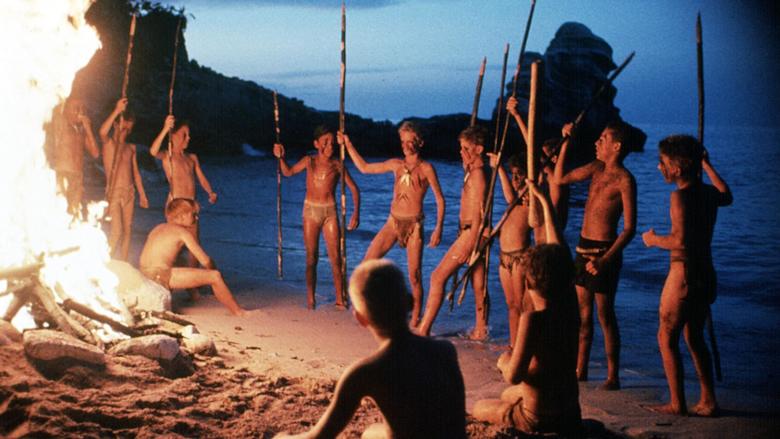
Before delving into the alternatives though, I’d first like to outline what exactly has gotten stale. The scenario is something akin to the following: a group of people is dropped into the wilderness, completely cut off from society and unbound by the rules they have been obligated to follow for their entire lives. The group slowly descends into a different order, guided by primal instincts, self-preservation, and a “might makes right” mentality. Reason is thrown out the window, and anarchy or dictatorship settles in. The protagonist seems to have kept his wits about him and is the last remaining hope for salvation. And thus the story goes.
In the scenario I mentioned above, I tire the most at the struggles most main characters have in trying to “stay pure” and finding ways to bring people back to the side of reason and civilization. Not only does it usually feel like a cheap way to keep the plot moving, but it also makes the main character annoying at best and shallow and undeveloped at worst.

There is a way to keep characters undeniably “good” while making them less naive and frustrating to watch. Instead of having a protagonist be completely averse to the idea that evil could be innately human, have them acknowledge evil but still lack the willingness to embrace it. In Mayoiga, this would be something akin to Mitsumune coming to terms with the fact that most the people in the travel group may fall to the moral wayside, only then to exploit that human tendency to create order or at least skirt on the edges of survival. This alternative follows a dictum of the uncivilized world: the weak perish and the strong survive. The fact that weak-willed characters survive in the harshness of the wild always seems to revolve around utilizing luck and strange narrative twists to have them rebound from the brink of death. This method abandons that irrational and often frustrating progress of events and instead gives reasons to allow viewers to believe that the weak-willed deserve to live.
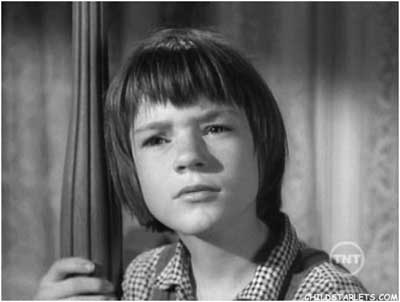
Of course, there are flaws in this implementation of the Lord of the Flies formula. For one, there are certain themes or perspectives that require the existence of a naive character that views the evil in humans through a lens of innocence. Great literature and films have utilized this scenario and created masterpieces. In addition, it’d be equally boring and frustrating to give every weak-willed character an acute human relations acumen. Should this implementation of the formula develop the way the classic formula has, every protagonist in the shoes of Mitsumune in a few years will end up being savvy, charismatic manipulators that save people from degrading their humanity, which would be equally boring as the current implementation.
Another alternative begs the question: “Why have the protagonist be apart from evil in the first place?” Indeed, why can’t the protagonist be a part of the new order of brutes? For sure, the idea has been heavily developed in other forms of media but has rarely been explored the same way in anime. One of the big strengths in this variation is flexibility. While the position and situation of the protagonist is set, everything else can be different. Having the protagonist be apart from uncivilized society requires the setting and characters around the protagonist to be similar every time. Those factors are the ones that depict the evil in people — plural — while the protagonist has to uphold the potential for good in a person — singular. By default, the protagonist is different from the majority, and since the majority must remain constant due to the nature of the Lord of the Flies formula, there’s only so much creative space to allocate elsewhere. Since in this alternative, the protagonist is a part of the characteristic incivility, the room to develop is greater and thus offers flexibility in how writers can progress.
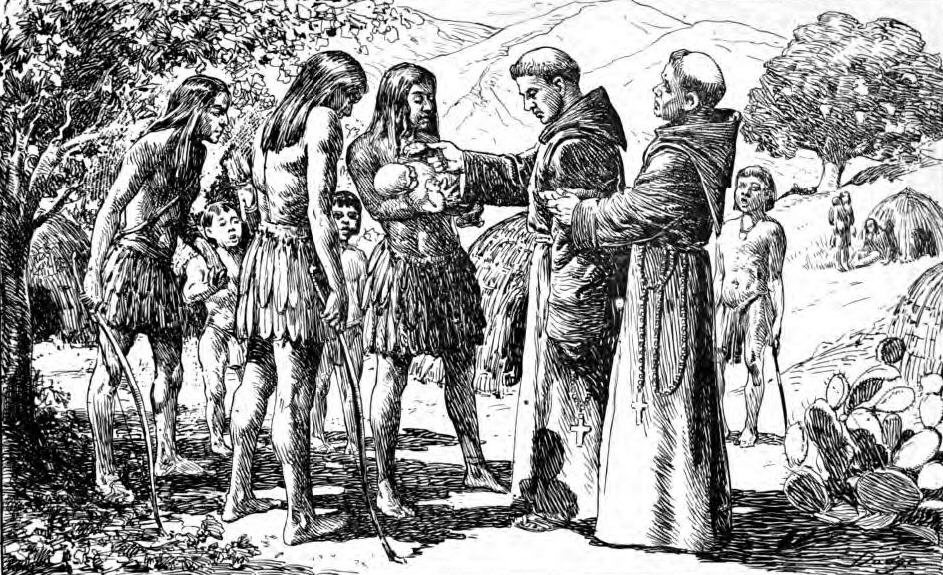
For example, one way this option can play out is by having the protagonist be on the receiving end of being “saved”. A different character can assume the role of the naive idealist or the socially acute manipulator and free the protagonist from “brute” society. This unveils new themes from the perspective from one who is receiving the benefits of liberation, ones that aren’t necessarily the simple reverse of ones from the opposite viewpoint. Does the clash of liberalization (e.g. return to civilization) and conservatism (e.g. sticking with primitive society) anger the protagonist? Will the protagonist insist the outsider is wrong? Useless? Damaging to his society? Would he kill the naive one or let him live?
These are just two of many alternatives I think are out there and could work specifically with the medium of anime to bring new tastes to an established and often misused formula. Are there any that you think might work? Continue the conversation in the comments below!
2.2 In Defense of Character Tropes and the Wrong in Violating Stereotypes (Flying Witch)

Tropes. Anime is filled with them, and it’s become the norm to employ them as an easy way to introduce characters. While they’re convenient for writers, fans tend to complain about them indiscriminately, which isn’t necessarily bad. After all, nothing ruins a good story the same way a stale cliché can. Despite their unpopularity, I believe that recognized character tropes have their uses.
As the title to this section might indicate, I am referring to the industry-wide usage of physical traits to depict a base level of characterization. Examples of these include: long, black hair to indicate a reserved and calm personality; short, spiky hair that points to a spunky and energetic attitude; certain verbal cues to indicate levels of masculinity/femininity and/or socioeconomic class; and ‘cold’ colored hair and eyes that reveal kuudere Ayanami Rei clones 2. Though there are many more, these are few of the more prominent ones that tend to be consistent in their usage.
Why are these useful? There are a few cases worth mentioning, but I’d like to focus on just one for the sake of discussion. Primarily, we see tropes used as a sort of carpet, something to lay on characters to give them at least a base layer of decoration/personality. This gives tropes priceless utility in a medium that’s usually inundated with mediocrity. Because of recognized character profiles associated with physical traits, a single look or line can provide most viewers with at least an educated guess as to what the character is like.
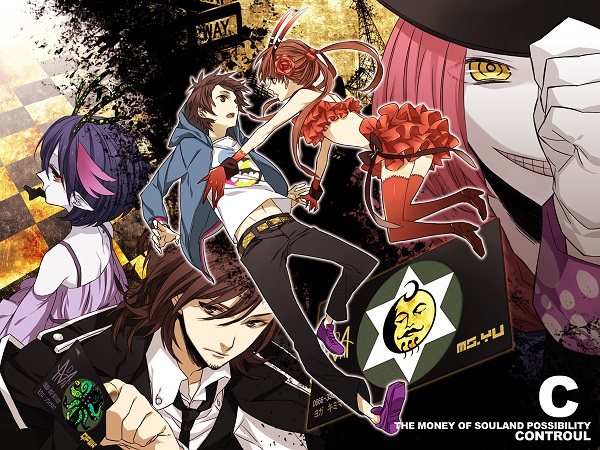
For a protagonist or any other main characters, using tropes in this way is cheap and completely warrants the criticisms it garners. However, for a supporting cast, tropes are a godsend. It’d be wise to think of it this way: had tropes not existed, what is a boring, dull character could potentially have been nothing but an exposition-spouting machine. Though the copy-paste nature of trope-based characters is bad, it’s worse to have a character with no personality at all.
One potential argument against the benefits of tropes in this case is that the reliance on tropes makes writing weak in general, and had common anime character profiles not existed, the writers would have had to develop unique and relatable characters. Thus, it would be better for writers to ignore universal character profiles entirely.
I find that this point is largely irrelevant partly because I find it difficult to believe that a lack of tropes would actually improve writing and character development on a large enough scale to effect the industry as a whole. Losing that core aspect of anime would have no impact on the series that are and will exist to be great. From Fullmetal Alchemist to Anohana, series that have good characters largely don’t use tropes in the way I specified. The difference between these and the mediocre to bad anime is initial intention. The author of Fullmetal Alchemist fully intended to flesh out the characters of Edward and Alphonse from the start. I can hardly say the same for the writers of Rail Wars, which has characters with depth the same way generic brand string cheese has flavor (i.e. it doesn’t). Instead of forcing writers to be more creative, the lack of tropes to fall back on would just make characters with something become nothing.
Getting back on topic, I’d like to point something out that’s crucial: creating original characters requires the intent to be creative from the start. And here’s where Flying Witch comes into this. Makoto is a stellar copy and pasted character. From her outward appearance to the choice and performance of voice actress to the majority of her lines, it’s clear that the writers never really wanted a character-focused anime, which is absolutely fine. As previously mentioned, tropes used this way are acceptable. The problem comes when the writers decide to get creative after deciding to utilize a cemented character archetype.
Makoto is quiet, calm, and warm-hearted, as her visual design and the script heavily suggest. For the most part, these aspects of her personality are left unchanged. This fact coupled with the prevailing character profile signal that the writers were heavily entrenching Makoto in stereotypes. In a few scenes, Makoto heavily betrays her established character archetype for no good reason, which makes her worse as a character. This is first explored when she chases after a pheasant, a scene in which she appears uncharacteristically excited and flustered. The same excitement is shown rarely throughout the series, so choosing to give her this conflicting character trait makes her a worse character because it violates her identity as an established trope.
It’s not just the fact that these events break her mold. The problem lies in that they are arbitrary and unhelpful in the development of her character. Never before had Makoto really displayed this sort of energy, nor is this trait really explored or explained. It doesn’t add any depth to Makoto as a character either. It’s simply a random little quirk that writers decided they could conveniently lean on to add content to the series.
And here’s where the entire discussion about the usefulness of tropes comes into play. Since these inconsistencies in personality don’t have any real purpose concerning Makoto, it adds unwarranted confusion to her identity that was already solidified before. Makoto was never meant to be a fully developed character; that’s simply not the point of the anime. Using a trope, then, was justified. But when the writers decided it was time to give Makoto some random flair, they violated the purpose of using a trope in the first place. Since Makoto never receives meaningful development, she turns into an inconsistent character, and an unreasonably inconsistent character is far worse than a cut-out of an already existing one.
Does any of this really matter? To the show, not really. Whether Makoto is an inconsistent character or not doesn’t hamper the Flying Witch‘s appeal and doesn’t make its flaws more pronounced. But the discussion of tropes themselves can carry some significance because the anime community often times bashes characters based on tropes without good reason.
2.3 The Asterisk War and Problems with the Popular Review System
Almost from day one, I’ve seen huge outrage against The Asterisk War, no doubt fueled in part by the massive outcry against it from the internet. And the anime deserves most of it; the series isn’t impressive by anyone’s standards. While plausibly enjoyable, The Asterisk War wasn’t anything special. But after going over online reviews from review sites, anime blogs, and even YouTube videos, I noticed that rarely were people acknowledging the situation surrounding the series, the genre, and even the medium of anime holistically or rationally.
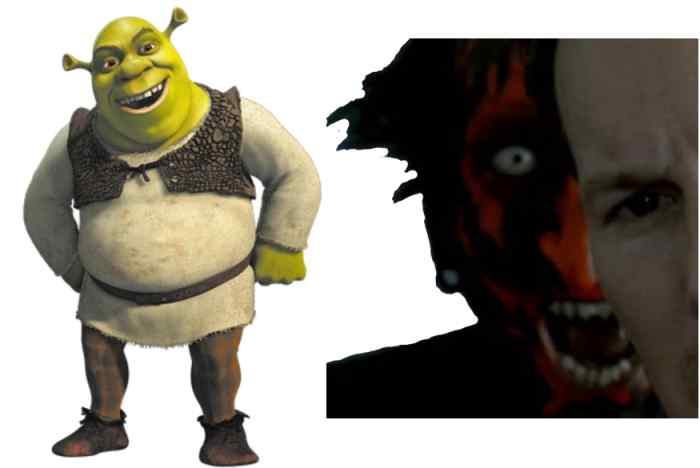
Let’s say you’re out with a friend who is looking to watch a good horror movie. They ask you for suggestions, to which you say, “Shrek is a pretty good movie. It’s got great character development and it’s really funny.” You might get a confused look from your friend for a few reasons, but they all boil down to the differences in two categories, both of which parallel the issues I have with the complaints directed towards The Asterisk War.
Genre and Weighted Categories
The first of these is genre. Shrek is clearly not a horror movie, and as a result, is graded on a different scale than most horror movies. While the former might emphasize creativity, characters, and plot, the latter gives less weight to or even forgoes these categories in order to create a good scare. Distinct genres highlight different features, making it illogical to transfer standards of one genre to a different one.
Yet, this analytical qualification is more often than not absent in critiques for The Asterisk War. Doing so creates a scenario in which anime seemed to be judged objectively, either by way of some numbering score that equally weighs various factors to create a composite score or a more qualitative method pursues a review method of equally weighted categories, but actually isn’t. After all, a completely even playing field means that all series are judged against the same standards, leading to a uniform and essentially fair grading system. We’ll see that this isn’t necessarily the case.
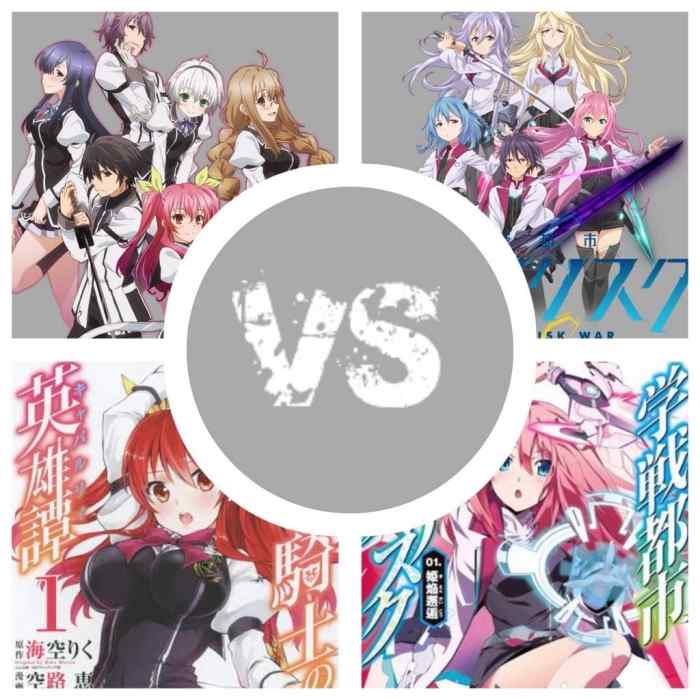
Some might argue that there isn’t enough diversity in anime to warrant a different grading system — that, for the most part, anime is more homogeneous than other media which gives it a significant lack of diversity that allows for the disregard of genre-specific emphases, save for a few exceptions. I firmly disagree with that proposition because it is a product of a perspective that overlooks the subtleties between genres and enjoys painting a uniform picture of anime that doesn’t exist.
Consider the following hypothetical situation. Blogger A and B have just finished watching an anime. It was an action anime with lots of intense action and amazing camerawork, but the plot and characters were pretty average. Both bloggers utilized the same building blocks of fiction (i.e. visual, audio, characteral, and narrative quality) to evaluate the anime, but Blogger A weights his categories whereas Blogger B does not. Under the same objective microscope, both have decided to give nines out of ten for audiovisual excellence but a five for average characters and a four for a boring story. Blogger B’s composite score ends up at a slightly above average 6.8/10. Blogger A on the other, recognizes that action label warrants a higher value on the action portion of the series, and thus gives slightly more emphasis to audiovisual aspects, which leads to the following weighted categories: 30% audio, 30% visual, 20% characteral, and 20% narrative. Blogger A’s score for the anime is a 7.2/10.
As the example above shows, even the smallest weights can drastically change the numerical score (should one be using a quantitative judging method) and, as a result, public perception. Just by tweaking certain categories to have 5% more weight than a completely equal rubric would have an anime’s score can go up nearly half an integer. A 7.2 gives off a more positive image than a 6.8, meaning more people would be willing to try the anime, which in turn means more people will be able to appreciate it for what it truly is.
Of course, it’s impossible to concretely designate specific numerical weights for certain categories. Considering the mixing of genres in the medium of anime, one would have to specify the weight of each category for each individual anime, and that isn’t practical, efficient, or even objective. But the example illustrates the capacity of weighted categories in determining how good an anime really is in comparison to its peers, and that what seems to be even a small difference can end up shifting the fate of an anime because of how those small difference affect public perception.
When going through reviews for The Asterisk War, acknowledgement of this difference was rarely given. Did the characters actually matter to the story? Does the story cater to the focus of the genre? Would genre standards actually affect how people view The Asterisk War? These and many others were questions that were largely ignored but deeply relevant to the issue at hand.
Audience and Intended Purpose
The second category of ignorance concerns the intended audience of the anime and the directive of the writers and directors. Briefly going back to Shrek and horror movies, the two clearly have distinct audiences and purposes. The former appeals primarily to younger children and engages viewers with a story about identity and love. The latter targets adults and wants to scare the skin off of anyone daring enough to pay money to be frightened. As a side note, while these factors are influenced by genre to a certain extent, even forms of entertainment within the same genre can have varying audiences and purposes.
Looking at reviews for The Asterisk War, a majority of those who reviewed the series didn’t consider this fact as holistically as they could have. Some made mention of the intended audience, but never of the purpose. Others fully acknowledged the relationship between the characteristics of the anime and their intended purpose without the context of their effects on the intended audience. But it was rare to see both at the same time, and therein lies the problem.

Before we go into how most reviewers were doing this part wrong, it’d be prudent to first describe the intended purpose and audience of the anime in question. The Asterisk War started out as a light novel, the Japanese equivalent of young adult books before being adapted into an anime. The series unambiguously targets teenagers, made clear from it’s starting medium and the setting, which features a high school. The Asterisk War aims to immerse its audience in a microcosm apart from the inanity of their everyday lives and their powerlessness to escape it via a protagonist with the ability and fortune to be able to do what the viewers themselves never can. The last two thirds of that sentence might be pushing it, but I don’t think it’s too far off from the true appeal of The Asterisk War.
Why is any of this important? For one, the vast majority of people who speak publicly about their critiques are adults, past their teenage years and far in age from the intended audience of The Asterisk War. The values and experiences of these people are not what the author wanted to appeal to. It’s obvious that some of the events and characters appear stupid and irrational. An older demographic will crave different things and view events through a different perspective. Complaining about some of the things in The Asterisk War is akin to buying a McDonald’s Happy Meal and complaining to the servers that you’re still hungry. The next step in the ladder of logic would then lead us to why there’s a problem that reviewers aren’t mentioning the intended purpose. If the anime can’t appeal to our values and point of view, how would it ever accomplish its intended purpose, particularly with The Asterisk War? Even without justification, I believe that we can all agree that appealing to someone who isn’t on the same intellectual wavelength as you is a particularly difficult task.
Flaws and a Remaining Question
Before going on, I’d just like to point to a few flaws in my argument that wouldn’t be appropriate to address elsewhere as well as a particularly important leftover question.
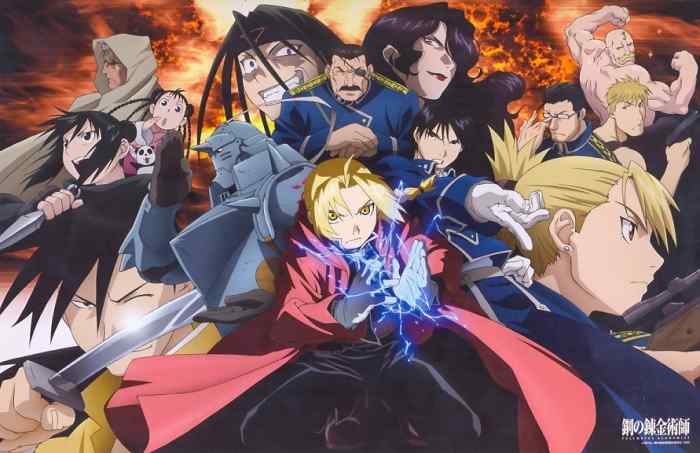
To begin, I’d like to address the existence of overall great anime, which I believe both to be the cause and the evidence for the primary argument of those in favor of generalist reviews. I agree that series such as Fullmetal Alchemist and Anohana seem to be exempt from the two categories I’ve discussed so far. They appeal to fans of all genres and viewers of all ages. Some proponents of generalist reviews might say that universal acclaim precedes genres, precedes intent and purpose. Clearly, any anime from any genre can succeed if they just do everything right. Thus, it seems right to judge all anime by the standards they uphold: unweighted, genre-neutral, and by the objective values that make them great.
I can concede that certain anime break the mold and can’t be categorized or analyzed as neatly as the rest. Series with universal acclaim don’t fit the the analysis/review guidelines that I’ve been outlining very well. However, that doesn’t mean that all series should be judged this way, and to justify it, I’d like to point out a marginal case: the slice-of-life genre. There are a few series with universal acclaim that fall under this genre, Anohana and Your Lie in April to name a couple. But we have always judged slice-of-life focused anime differently. Most of them have no significant plot, even fewer still make good use of great art, and characters are generally mundane. By the standards of their genre-specific “greats”, most slice-of-life series are positively trash. But most people still see value in slice-of-life anime, as is clearly seen by community ratings on various sites. If we can judge slice-of-life anime without considering Anohana or Your Lie in April, then how can we rationalize not following that separation in other genres?
To conclude the issue, I’d like to leave with this. It’s true that most renown anime have no common genre, audience, or purposes. However, one thing all highly rated anime have in common is a deeper look into the human condition. All anime explore this theme to a certain extent, from Ash Ketchum trying his hardest to catch all the Pokemon and finally win a Pokemon League to Ayato from The Asterisk War working to uncover the mystery behind his family and participating in the Festa. These feature moments of contact with the director’s will to show an aspect of the human condition, whether purposefully or not. However, all series that receive universal praise constantly and deeply engage with the topic. From how Arima Kousei addresses his childhood trauma in Your Lie in April to Edward Elric’s tussle with his philosophical beliefs concerning life and death, they consistently ask the question of how we as people should address the vicissitudes of life. Should that also be a category then in determining the quality of a series? Possibly, but for the sake of relevance and brevity, I’ll abstain from diving into that particular topic.
Another plausible complaint with what I’ve laid out thus far is the overestimation of a series based on weighted grades. An anime with stellar graphics no creative substance could be unfairly given credit as a 5/10 when it should really be a 1 or 2/10. A valid hypothetical situation, but it is absurd nonetheless. As with everything in life, there are minimum standards. No matter how funny or creative, no one would watch a YouTube video in 240p resolution. No one would enjoy a movie that has an absolutely nonsensical and non sequitur plot and terrible visual fidelity no matter how good the characters are. Similarly, there are obvious minimum standards to be considered when evaluating anime. There are obviously exceptions (e.g. the original One Punch Man web-comic), but 99% of the time, people will instinctively know when the minimum level of quality has not been reached.
Lastly, using Shrek as my example or even alluding to Western animated films might not have been the best way to point out the flaws with anime reviews. Shrek, and most other Western animated family films for that matter, are typically very enjoyable and well-made. Comparing any Pixar or Dreamworks film with The Asterisk War might have made it harder to make the connections between the circumstances that surround the two.
Further Significance
I believe that even taking into consideration these two factors, the overall perception of The Asterisk War would remain the same. Applying all of these changes to any single review that didn’t previously have them would do nothing to save The Asterisk War. But what happened with the anime is only a symptom of the greater problems that plague the anime review system. If one anime is being graded this way, then so must all of the others. Of the 100+ anime produced every year, how many of them could have been passed by people who were unfairly deceived into overlooking an anime they might have enjoyed?
This goes beyond the issue of missed opportunities; there is a personal stake in the matter for all fans of the medium as well. These reviews appear rational. They appear objective and fair. They appear to be sophisticated looks at a confusing and foreign medium for many. But many of them have criticized unfairly with a flawed method, thinking themselves to have analyzed thoroughly. Some of these reviews are honest mistakes, perhaps born of the anger or dismay the reviewers faced after watching a subpar series. However, others take pride in what they did because it got them views or clicks, because it gave them attention and the stature of sophistication. These are the sophists, the ones who claim to have knowledge, but preach falsely. And whether or not those who aren’t the sophists intend to, their opinion will breed other sophists who read a seemingly comprehensive review without knowing there is more to the story. I call them sophists out of respect. Others call them anime snobs, otakus, and weeaboos.
It’s not wrong to receive knowledge from those who have gone before; it’s the only reason humans have achieved everything they have. But it’s another thing to presumptuously assume that all knowledge you’ve received is true or universally applicable. And while we can’t stop the know-it-alls from being themselves, we can stop them from further spreading misinformation. We can provide them with them with the tools to comprehensively analyze anime, or even other reviews, and we can incline them to use those tools to give moderate and universally applicable advice concerning anime as opposed to the brash, extreme comments they’re known for.
In doing so, maybe we can improve the world’s image of anime, even if it’s a little bit. Was that a far-reaching claim? More than likely. But I think that every step counts, and if nothing else, maybe people will stop letting their emotions get the better of them. Everyone is entitled to opinions. But those opinions shouldn’t affect the way reviewers present what they call objective and unbiased information.
It’s really the end! Thank you for reading through, and see you all in the next season.
Works Cited
What do you think? Leave a comment.




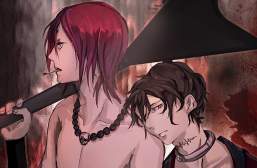
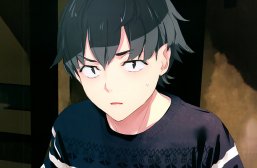
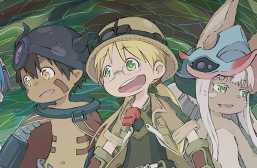
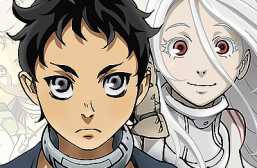
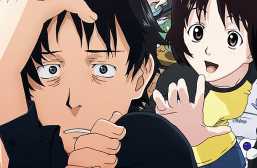
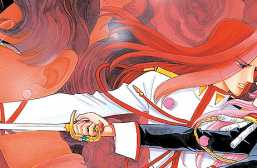
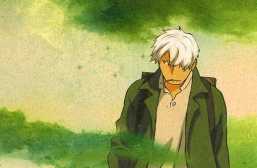
Actually, Endride isn’t based on a video game, it’s a multimedia project.
What makes me frustrated about Gakusen Toshi Asterisk is that even though the plot is all over the place, the characters are tropey, and the overuse of flashy lights is annoying as hell, the aesthetics of this anime are amazing.
Flying Witch was one of my favorite of this season and I enjoyed your in-depth discussion of it (but did not agree to everything).
One thing I’ve liked is how they’ve wrapped in a really good feel for the witchcraft in the show. For me, I’ve been finding similarities to the witches in Terry Pratchett’s Discworld books, which are some of my favorites. The different specializations, the non-secret aspect of it, the embrace of nature and the downplaying of ‘spells’, at least for most of the witches we’ve seen.
I also like that they’ve been bringing Makoto and Kei back to a little more typical ‘teenager’ behavior, as opposed to the very adult behavior they had at the beginning of the series. They’re still atypical teens, especially Kei, choosing to weed the garden and the yard, finding wild edible (although frequently possibly poisonous) plants, but they did let themselves go a little bit at the cafe, doing things that I certainly would have been annoyed by had I been the fox or the ladybugs (or even Hina).
But one characterization that’s been spot on throughout is Chinatsu, from her initial suspicion of Makoto to her full embrace of the ‘secret’ witch lifestyle. She’s realized that most of the stuff Makoto is showing her is safe, and her acceptance of the characters she’s met since the Haru no Hakobiya has been nice to see.
Wow, Discworld certainly brings me back to my childhood. I remember trying to read a few of those books based on several recommendations, but could never get into them. Now that it’s been decades since my last attempt, it might be worth it for me to try again.
Chinatsu is such a fantastic character. I think the writers did an amazing job bottling up childhood in her mannerisms. I particularly enjoyed the episode where she followed Chito around the town. I’d love to see that energy and curiosity last the years into adulthood, perhaps a bit like Akane. Chinatsu’s also a wonderful example of how much children absorb the world around them, whether that’s with an open mind like she has exhibited in the show, or the complete opposite like many other unfortunate examples I’ve seen in real life.
Checked a few scenes of Sakamoto. I didn’t expect to laugh so much from them
Ace Attorney is one of those anime where it could really benefit from diverging from the source material a little. It’s way too much like the game and it gets a little too cringe-worthy.
Great article. I have an anime fan in the family who will read this.
I feel like there should be an anime about business men, and one of them trying their best to reach the top. I mean, with all of these highschool animes, it would be great to have an anime about the average day salary man.
You have done a good job here introducing the series and praising many of their good and bad qualities.
Mayoiga is in my mind one of the worst anime ever made. However, there is one saving grace for this show, albeit an unintentional one. And that is quite simply that it’s actually pretty funny.
Im really enjoying Kabaneri of the Iron Fortress. I think its a pretty good twist on the whole zombie genre. Plus the added samurai/steampunk angle also helps it stand out from the rest. Im not a fan of the half monsters half human cliché story they have been using for the first couple of episodes but luckily they are starting to move away from it now. Mumei is an awesome character. She basically seems to have been raised as a weapon for her master. Its funny watching her try to interact with the scared humans. Ikoma on the other hand gets on my nerves most of the time. I understand they need to show how weak he is, but hes also annoying to me. The animation is just awesome.
Besides from Jojo, the three anime with the best first episodes for me were Re:Zero, Kabaneri, and Sakamoto. I’d highly recommend that anyone with even a remote interest in anime watches the first episodes of these three.
I really enjoyed sakamoto manga.
Just like Jitsu wa Watashiwa, I think this kind of manga is very difficult to adapt into good anime
The first episode had me in stitches almost all the way through, his stupid… I mean ultra-cool, princelike behavior is even more ridiculous when seen in movement.
Ah, harem. The genre that I mostly find myself gravitating towards is the one that has to do with lots of girls and only one guy. (Don’t judge me. We all have our favorite genre.)
Asteriks is just another one of those SAO lookalikes that A1 is trying to pass as an original anime.
Flying Witch is hands down my favorite series of the season – but I was charmed by the manga a year and change before the anime adaptation announcement came out, so my “favoritism” before it aired was not … unexpected.
Mayoiga!! Why the everloving frick would you have 30 characters in a show that’s only twelve episodes?! With so little time to develop anyone as a character, it’s a wonder that they even thought that that was a good idea. Honestly, over 2/3 the cast could’ve been tossed away and nothing from the show would’ve changed. It was an unnecessary waste and barely anyone was given decent character development.
Each episodes make you question the characters capability to use their brains because nothing they do make sense.
Watched Kabaneri of the Iron Fortress on Amazon, quite good, so far, reminded me a lot, and I mean A LOT, of Attack on Titan, just a tad less angsty.
Joker Game seems to be the most promising of the new series. I really like the suspense and the animation.
As much as I knew Asterisk War had quite possibly the most boring storyline and style, and is not cleverly pieced together in any way, I honestly thought the poster actually looked quite awesome. No this isn’t me indirectly saying “I like the girl with the big boobs and seducing thighs”, I actually thought the colouring, design and even the characters looked awesome. The only real problem you could get out of it would be if you watched the anime and then looked at the poster as if it was a lying piece of shit (which it so definitely is).
One thing that’s hard to understand is how the the damned thing got a second season.
Kiznaiver is definitely my favorite of the season. I think it has some beautiful direction, and the story is going somewhere interesting
This is the most generic season ever i’ve passed so many shows because 90 percent of them are all the same. I’m digging Jokers Game and Mobile Suit Gundam Unicorn RE:0096.
I haven’t liked a Gundam series since Gundam Seed personally. I was disappointed with a lot of the series including 00. Iron Blooded Orphans though renewed my faith and I knew 0096 would be awesome because all UC series are awesome and the Unicorn movies were awesome. Gundam The Origin Ovas are pretty kickass too.
Awsome, I watched Hundred and Asterisk Wars recently cause of your summaries. You really got me interested in them
I liked the first series of A Wars. I think that people are getting to a point where they are expecting way too much from their anime.
Flying Witch is one of very rare animes that I like without yuri-ish. Of course that I can find for my self some ships, but let not talk about it in this series. The reason I love it is peaceful, just like Non Non Biyori but with magic, the Flying Witch has created a haven for me, a supernatural with peaceful life fan. I think this series can keep moving forever.
Might as well call out Kabaneri of the Iron Fortress for what it is, Attack on Titan in all but name so that the studio has something to put out in place of the new season of Attack on Titan which has been delayed due to the need for the manga to develop more material.
Flying Witch described in a word: Cooooozy. I wouldn’t mind if we got to watch more of Makoto and co’s daily lives. I learned some things from this show as well.
The supernatural elements felt right at home in this world and I liked how everyone usually just rolled with it. I know they have different themes and they’re different genres and all but the Witch’s World reminds me of Harry Potter’s Magic World in that they exist alongside the Normal World, except in Flying Witch, the existence of magic is not really a secret and it’s not such a big deal if the “Muggles” found out about it.
Watched episode one of Mayoiga. I either expect it to devolved Lord of the Flies style or there being a group in the village that wants to kill the visitors. Like all those mentionings of cannibalism in the episode.
Wow, you’ve done your research.
A big reason of why I love Mayoiga a lot is because I find it to be incredibly fascinating. Mayoiga is a monstrosity in terms of conventional storytelling. It breaks about every rule there is, there’s about nothing about it that people would usually say makes a good series, but at the same time it was somehow received incredibly well by a lot of critics (Nick Creamer and Isaac Ackers, writers for ANN and Crunchyroll respectively as examples among others). I think the reason for that is that what Mayoiga tries to do is take things that would conventionally be considered wrong in storytelling and tries to apply them to its comedic atmosphere.
The fact that Mayoiga has an enormous cast (tho I’d argue it has only ~10 characters) and most of them are extremely simple is a thing that most people, including you, would say is enough to break a series, yet Mayoiga in its comedy strongly relies on this. A lot of the jokes come from characters constantly acting out their ridiculous one trait that they have. Lovepon’s constant asking for execution, the fat guy constantly wanting to sleep, the couple constantly being lovey-dovey. These are characters that would conventionally be considered awful but they enhance the show a lot through their comedic use.
I personally found Mayoiga to be absolutely hilarious and I found it to be one of the funniest shows of the year and comedy is of course incredibly subjective, but I feel whether or not you actually ended up enjoying the comedy or not, I feel like just for what the show was trying to do, it already deserves some respect. It’s certainly has found a place in my heart and I doubt I’ll forget it any time soon
Very interesting article.
Its a little better than last season but still pretty bleh, I’m only watching Gundam UC, Kabeneri and SMC S3. Everything else is bleh.
This BAKUON!!-series seems so silly and overly cute…
Re: Zero is such a BEAUTIFUL series. It’s one of my favorites.
Ditto. Don’t know why so many people dropped it.
I wonder how critics of Japanese origin would have reviewed those animes. For Western spectators it may be a good way to find their feelings and beliefs reassured by a Western critic but we don’t have any feedback from the primary audience that resides in Japan. Have they similar opinions that match at least in average to ours? Or are we missing something because we lack the cultural background? Is there any Japanese review site that publishes in English?
I suggest the authors of the anime- and manga-related sections of this site to get into contact with Japanese authors in order to gather their points of view. This would enrich their writing with authentic material. Yes, there is a link between “author” and “authenticity”!
I thought Asterisk War was a fine show (not amazing). And I will acknowledge I am a sucker for most any shonen fighting anime. However I do recognize that this show has a lot of issues, and I understand why lots of people dislike it. I would highly recommend to anyone who thought the show had potential it didn’t live up to (and to anyone in general really), the anime Chivalry of a Failed knight. In my mind that show is just a better version of Asterisk War (though I haven’t seen season two yet so I can’t speak to that). Still, Chivalry of a failed knight is amazing.
To the author: you’ve obviously put a huge amount of effort into this article, and it seems you know an equally huge amount about anime. I salute you for that. However, as someone completely new to the world of anime, I was a little overwhelmed by the massive list of show names that don’t mean anything to me. If you grouped the shows by genre instead of by name, it might be easier for newbies like me to navigate.
After watching Mayoiga, I feel like formula could have work if the amount of characters that were put on focus on were cut. Attempting to give around 30 characters individual personalities. As you explained Mitsumune was a cookie cutter “good guy”, but they did offer some strong characters with a narrative in the Lord of the Flies formula, Hayato or Koharun changes in character in this space (or reveal since both had pre-existing motives). On paper Mayoiga has a lot of potential in plot, but the pacing and writing didn’t do the idea justice. I think Kizanavier would be a good anime to look with the Lord of the Flies formula. While it isn’t a physical isolation, the idea of this forcing people in a pseudo isolation space, and the emphasis of conflicting human archetypes creates a very interesting atmosphere.
Overall this list was well and as a avid anime enthusiast, I didn’t mind getting your take and reading all this, but I feel like list should be concise and more or so to the point. Individually I enjoyed you go over each anime, but as an singular article, I wouldn’t mind some things being cut.
Thank you for this guide! I attend Comic Con in London every year and am lost when it comes to Anime. I usually have to have people explain their costumes when I photograph them. They are nice enough and tell me who they are portraying and will sometimes go into detail about the story lines, etc. This is very helpful for a newbie to the genre, like me.
Nicely done! Bungou Stray Dogs is a very nice blend of western styled characters with an ecstatic plot. Highly recommended.
Very informative article! I enjoyed reading your take on the upcoming anime(s).
What an in depth guide to 2016 Spring and Summer season. Definitely got me to add some more show to my watch later list
I love the organization on this article! Thank you!
“Tanaka-kun is always listless” is such an amazing anime!
lovely article
Nothing like binge-watching anime on a break! Love the article. 🙂
love for Chinatsu
excellent list! I can tell there was a lot of thought put into this!
Great List!!
Late comment perhaps, but this is a fantastically in-depth list. Great work!
Interesting reading the Re:Zero portions from early on, considering that he does deepen as a character and does end up winning over Emilia romantically in Season 3.